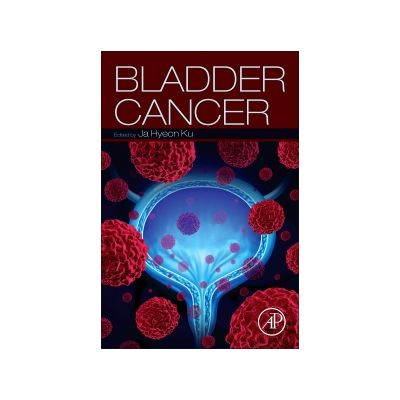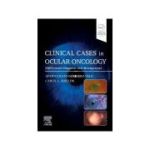Bladder Cancer

DESCRIERE
Bladder Cancer is designed for researchers and clinicians involved in urologic practice, including urologists, medical oncologists, pathologists and radiologists. It provides comprehensive guidance for treating and understanding bladder cancer and serves as an up-to-date reference reflecting evidence-based research.
The biological behavior of this disease entity shows a heterogeneous pattern with diverse morbidity and mortality depending on a variety of factors, such as tumor characteristics (tumor stage, grade, size, number, shape, and histologic subtypes) and applied treatment modalities (surgery or non-surgical management).
This book presents the substantial academic developments in the field of bladder cancer in one convenient reference.
Key Features
- Presents a comprehensive overview of the basic and translational research into bladder cancer
- Provides the established guidelines for bladder cancer in real clinical practice and relevant evidence-based research
- Saves academic, medical and cancer researchers time in quickly accessing the very latest details on bladder cancer, as opposed to searching through multiple sources
- Assists academic clinicians in understanding the importance of the breakthroughs that are contributing to advances in bladder cancer research
Table of Contents
Chapter 1. Epidemiology, etiology, and pathophysiology
1-1. Epidemiology
1-2. Etiology (risk factors)
1-2-1. Smoking
1-2-2. Occupational exposure to chemicals
1-2-3. Treatment related factors (radiation therapy, chemotherapy)
1-2-4. Dietary factors
1-2-5. Chronic urinary tract infection
1-2-6. Gender
1-2-7. Genetic factors
1-3. Pathophysiology
Chapter 2. Diagnosis
2-1. Symptoms
2-2. Physical examination
2-3. Urine cytology and urinary biomarkers
2-4. Cystoscopy
2-5. Imaging studies
2-6. Transurethral resection of bladder tumors (TURB)
2-7. Bladder and prostatic urethra biopsies
2-8. Fluorescence cystoscopy
2-9. Second resection
Chapter 3. Pathology and staging
3-1. Histological classification of bladder tumors
3-1-1. WHO classification of urothelial cell neoplasms
3-1-2. Non-urothelial neoplasms of the bladder
3-2. Tumor, Nodes, Metastases (TNM) classification system for bladder cancer
Chapter 4. Treatment for non-muscle invasive bladder cancer (NMIBC)
4-1. Risk factors for recurrence and progression
4-2. Treatment for TaT1 tumors
4-3. Treatment for Carcinoma in situ
4-4. Treatment for T1G3 tumor
4-5. Intravesical chemotherapy
4-5-1. Single, immediate, post-operative intravesical chemotherapy
4-5-2. Additional adjuvant intravesical chemotherapy
4-5-3. Optimizing intravesical chemotherapy
4-6. Intravesical BCG immunotherapy
4-6-1. Indications for BCG
4-6-2. Optimal BCG schedule
4-6-3. Optimal dose of BCG
4-6-4. BCG toxicity
4-7. Treatment of failure of intravesical therapy
4-7-1. Failure of intravesical chemotherapy
4-7-2. Failure of intravesical BCG immunotherapy
Chapter 5. Treatment for muscle-invasive bladder cancer (MIBC)
5-1. Neoadjuvant chemotherapy
5-2. Radical cystectomy (RC) and urinary diversion
5-2-1. Timing of radical cystectomy
5-2-2. Indications
5-2-3. Open techniques and extent (including pelvic lymphadenectomy)
5-2-4. Laparoscopic/Robot-assisted laparoscopic radical cystectomy
5-2-3. Methods for urinary diversion (ileal conduit or orthotopic neobladder)
5-2-4. Morbidity, mortality and survival for RC
5-3. Bladder sparing treatments
5-3-1. Radical TURB
5-3-2. External beam radiotherapy
5-3-3. Partial cystectomy
5-3-4. Chemotherapy
5-3-5. Multimodality treatment
5-4. Adjuvant chemotherapy
Chapter 6. Chemotherapy for metastatic disease
Chapter 7. Follow-up (surveillance)
6-1. Surveillance for NMIBC
6-2. Surveillance for MIBC
6-3. Novel and emerging surveillance markers for bladder cancer
Categorii de carte
-Comandă specială
-Edituri
-Promo
-Publicaţii Callisto
-Cărţi noi
-- 708,75 leiPRP: 787,50 lei
- 481,95 leiPRP: 535,50 lei
- 1155,00 leiPRP: 1260,00 lei
Promoţii
-- 151,20 leiPRP: 378,00 lei
- 82,95 leiPRP: 829,50 lei
- 189,00 leiPRP: 945,00 lei












REVIEW-URI